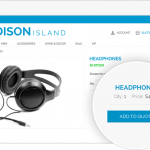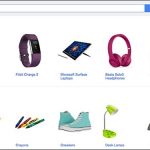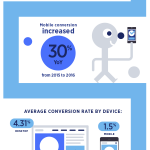Google’s Ecommerce Influence In Decline
Google’s Ecommerce Influence In Decline
by Laurie Sullivan @lauriesullivan, September 7, 2017
Google remains the key driver of web referrals, but its influence in ecommerce continues to decline.

The company generated 62% of all traffic to ecommerce sites and 63% of all revenue in the past 12 months — down from 69% of traffic and 67% of revenue in the prior year ending in 2016, according to Wolfgang Digital’s 2017 E-Commerce Benchmark KPI Study released Thursday.
The study — which analyzed 143 million website sessions and $531 million in online revenue between July 2016 and June 2017 — aims to give ecommerce marketers insights to help benchmark their business’s online performance and understand which metrics drive e-commerce success.
Google maintains the lion’s share when it comes to revenue generation with Google Organic and Google cost per click, bringing in 38% and 25% of revenue, respectively.
Direct traffic, where searchers type in the URL and hit “return” on the keyboard, generated 18% of traffic overall. There are three types of direct traffic: returning visitors and returning customers, advertising, and dark traffic defined as when Google Analytics doesn’t recognize a source by default. For example, clicks on these links in WhatsApp will appear in Google Analytics as Direct traffic.
Email generated 3%; Facebook organic, 3%; Facebook paid ads, 3%; Bing organic, 1%; Yahoo organic, 1%; and others, 11%.
Sites with a higher share of Bing cost per click (CPC) traffic tend to see a higher average order value of 0.22. The study suggests these are “sites with high-performing Google AdWords campaigns looking to expand their reach even further.”
Interestingly, if Google places a brand or website at the top of the organic search query listing, it’s like a “transferal of trust from Google” to the brand or company. High levels of Google organic traffic enjoyed a strong correlation with conversion rates, about 0.48.
Not surprisingly, the customer journey continues to grow longer. The number of clicks required to generate about $1.2 million online has grown from 12% in the past year, per the study.
Website speed absolutely matters. The study identified a strong correlation between the average page load time and revenue.
And sites that got more smartphone and tablet views grew revenue faster. Mobile dominates when it comes to raw traffic, according to the study.
In 2017 — the first year in which the study found mobile claiming more sessions than desktop and tablet combined– marketers are still seeing few shoppers purchasing on mobile. The 52% of share in traffic only has 26% share of revenue.
The data shows that desktop generates 61% of all online revenue. In fact desktop users are 164% more likely to convert than those browsing on mobile. And when desktop users convert, they spend an average of 20% per order more than mobile shoppers.
MediaPost.com: Search Marketing Daily
(20)













